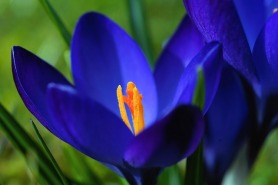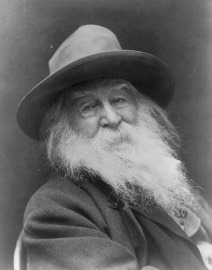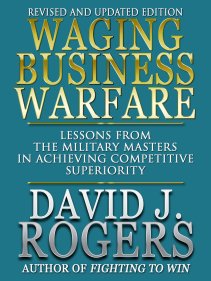I wanted to know why artists and writers are so self-absorbed.
Then I wanted to know why writers, painters, and other artists bloom late.
In popular posts I addressed those questions. Now I want to know why so many writers and artists are intense and have intense personalities.
Waking, Wanting To Get Going
 I was excited waking up at 3:00 A.M. yesterday, and I was not thinking of going back to sleep. I wanted to finish some poems where I had left off the night before. I thought, “Let my wife–a calmer, less excitable person–sleep; I love to work and I have work to do.”
I was excited waking up at 3:00 A.M. yesterday, and I was not thinking of going back to sleep. I wanted to finish some poems where I had left off the night before. I thought, “Let my wife–a calmer, less excitable person–sleep; I love to work and I have work to do.”
Then I started thinking that it was likely that other creative people I know–good friends in the arts–at that very moment also were waking early and were anxious to get to work on their project, that we are similar–we resemble each other in regard to the emotions we bring to bear as we live and work–that we are all creative and we are all intense and excitable. Certain qualities endear creative people to me. One is their intensity.
It seemed to me then that intensity and excitability were a pattern, a hard and fast characteristic of myself and my artful friends, and come to think of it, of many of the famous writers and artists and other creative people I have been reading about, studying, admiring, and writing about all my life. Their intensity made them different.
The Feeling of Intensity
What does intensity feel like?
 Intense writers and artists do everything intensely–experiencing, feeling, thinking, and imagining. They are significantly different human beings from other writers and artists (and agents and family members and co-workers) who are not intense. They feel their emotions strongly. They soar high with elevated emotions, and they plunge into dark moods, at times their moods changing so fast as to be bewildering. In contrast, people who are not intense the way so many writers and artists are feel their emotions more mildly and without such major fluctuations between the high moods and the low moods. Differences in intensity between people who work closely together or live together may cause conflicts.
Intense writers and artists do everything intensely–experiencing, feeling, thinking, and imagining. They are significantly different human beings from other writers and artists (and agents and family members and co-workers) who are not intense. They feel their emotions strongly. They soar high with elevated emotions, and they plunge into dark moods, at times their moods changing so fast as to be bewildering. In contrast, people who are not intense the way so many writers and artists are feel their emotions more mildly and without such major fluctuations between the high moods and the low moods. Differences in intensity between people who work closely together or live together may cause conflicts.
Some writers and artists feel that they are being flooded by waves of joy, that their every cell is being excited. Some writers and artists–perhaps you, certainly I–revise their work tirelessly, at times almost maniacally, ten times, twenty times, thirty times, until they are satisfied the work is the best they can do. Only then can they stop themselves.
The intensity of writers’ and artists’ personality is a powerful element of their creativity. The wonderful poet John Keats thought that intensity–not intelligence or any other quality — in and of itself is the most powerful creative element of all.
Intensity and the Arts
 Intensity is a quality found in many creative people that facilitates artistic pursuits. Abbe Dimnet said that the creator’s intensity will be reflected in the quality of the work: “The experience of most artists is that the quality of their production is in keeping with the intensity of their wish.” Henry James wrote: “It is art that makes life, makes intensity, makes importance.” Horace said, “Painters and poets alike have always had license to dare anything.” It is their intensity that gives them strength. Keats said, “The excellency of every art is its intensity “ A problem every writer and artist faces is maintaining in every phase of their story or painting the intensity that keeps it going and energizes the creator’s every gesture and the work’s every detail. They must be able to generate and sustain intensity as they work.
Intensity is a quality found in many creative people that facilitates artistic pursuits. Abbe Dimnet said that the creator’s intensity will be reflected in the quality of the work: “The experience of most artists is that the quality of their production is in keeping with the intensity of their wish.” Henry James wrote: “It is art that makes life, makes intensity, makes importance.” Horace said, “Painters and poets alike have always had license to dare anything.” It is their intensity that gives them strength. Keats said, “The excellency of every art is its intensity “ A problem every writer and artist faces is maintaining in every phase of their story or painting the intensity that keeps it going and energizes the creator’s every gesture and the work’s every detail. They must be able to generate and sustain intensity as they work.
Emotional Intensity and Over-Excitability of Many People in the Arts
“Emotional intensity” of the kind I am describing is a quality that Polish psychologist, psychiatrist, physician, and poet Kazimierz Dabrowski found when he studied intellectually or artistically gifted people. The degree of a person’s emotional intensity is a stable characteristic. Some people are intense; some are not. Just as self-absorbed artists and writers can’t help being self-absorbed any more than they can help having the color eyes they do, intense artists and writers can’t help being intense.
Dabrowski recognized that, as I thought, creative people experience an intensification of experience much beyond what other people experience. Dabrowski considered the intensity of their emotions, their sensitivity and emotional extremes–their “over-excitabilities”–to be part and parcel of their makeup. Every aspect of their personality is intense.
They are “spirited,” and are also more sensitive, perceptive, energetic, and persistent than other people. They possess what I have called “inner” skills such as persistence, confidence, and courage that not everyone has but that lead directly to success in the arts. Dabrowski identified five “overexcitabilites” exhibited by more people in the artistically gifted population than in the general population.
The Five Dimensions of Intense Writers’ and Artists’ Lives
- Sensual
Sensualists, intense writers and artists seek an enhanced sensory and aesthetic pleasure in seeing, smelling, tasting, touching, hearing, and sex. They delight in beautiful objects and in sounds of words, and in form, color, and balance. Negatively, they may overeat and be sexually over-indulgent.
- Psychomotor
Intense people have a surplus of energy, are competitive, enjoy intense physical activity such as fast games and sports, often are compulsive talkers–they may jabber–and act impulsively. They may have nervous habits. They may bite their nails or have nervous twitches.
- Intellectual
They enjoy intensified activity of their mind in their curiosity, concentration, and in their capacity for sustained intellectual effort, avid reading, asking probing questions, and making keen observations. They can vividly recall what they see with their eyes (that fundamental necessity for writers and artists) and may be detailed planners. They are tenacious problem-solvers. They search for truth and understanding. They think about thinking and love theory and analysis. They are logical and independent thinkers.
- Imaginational
In speaking and writing, intense writers and artists often use images and metaphors, are given to poetic and dramatic perceptions, and are skilled at inventing. Some can make up fantasy worlds of their own and imaginary companions and are attracted to magic and fairy tales. Under emotional tension their imagery can mix truth and fiction. They may have elaborate dreams and illusions. They cannot tolerate boredom. They may lack self-judgment and be overly-critical.
- Emotional
The feelings and emotions of over-excitable writers and artists are intensified. They are given to extremes of emotions, complex feelings and a large range of emotions and have an awareness of the feelings of others. They have heights and depths of emotions that others lack. At times their mood soars. And it also may plunge. Their moods change quickly.
They may have strong physical expressions of over-excitability such as tense stomach, sinking heart, pounding heart, sweaty palms. Intense writers and artists experience euphoria, enthusiasm, and ecstasy, but also shyness, timidity, and obsessiveness.
But Dabrowski found that inner forces were at work in them also, forces that generated overstimulation, conflicts, and pain, and often set them out in a search for a way out. One way out may lead to inner growth and transformation, another may lead to results such as addiction.
Examples of Famous Intense Writers and Artists
 Who could be more intense than poet Walt Whitman who expressed a wish to have “one hour of madness and joy,” “to feed the remainder of life with one hour of fullness and freedom,” “To have the feeling today or any day I am sufficient as I am.” Who more intense than novelists Charles Dickens with his phenomenal storehouse of drive that enabled him to work on a multiplicity of books, speeches, plays, travels, and social projects at the same time without ever tiring?
Who could be more intense than poet Walt Whitman who expressed a wish to have “one hour of madness and joy,” “to feed the remainder of life with one hour of fullness and freedom,” “To have the feeling today or any day I am sufficient as I am.” Who more intense than novelists Charles Dickens with his phenomenal storehouse of drive that enabled him to work on a multiplicity of books, speeches, plays, travels, and social projects at the same time without ever tiring?
Or Thomas Wolfe whose monumental goal was nothing less than to describe in the millions of published words that poured out of him uncontrollably, as from a spigot, every experience he had ever had? And Gustave Flaubert, a pioneer of a modern writing style, who agonized rewriting his novels and stories to perfection? Or intense painter Vincent van Gogh who produced a masterpiece a day, or Claude Monet, who for his artistic experiments could paint thirty or forty canvasses of exactly the same scene.
There are drawbacks to a writer or artist being over-excitable and intense. But the advantages of being a writer or artist who is intense and has the powerful energies, the drive, and many other qualities that facilitate success in the arts far outweigh the negatives. The creative’s intensity is reflected in the quality of the work they produce–more intensity, better quality work.
If writers and artists are asked to identify the important characteristics they would l really like to have that would positively affect their career, they will be wise to identify intensity.
An intense writer or artist trying to create a vision they perhaps alone perceive is fortunate.
© 2023 David J. Rogers
For my interview from the international teleconference with Ben Dean about Fighting to Win, click the following link:
Order Fighting to Win: Samurai Techniques for Your Work and Life eBook by David J. Rogers
or
Order Waging Business Warfare: Lessons From the Military Masters in Achieving Competitive Superiority
or


 painter. The storm buffeting the windows and pelting them with hail and snow made impossible even the thought of digging cars out and driving home. But everyone was in a good mood, and the house was warm. We were happy being together again after being separated so long by COVID.
painter. The storm buffeting the windows and pelting them with hail and snow made impossible even the thought of digging cars out and driving home. But everyone was in a good mood, and the house was warm. We were happy being together again after being separated so long by COVID. accomplished people in the arts have wondered what they have that makes their creative work possible. The main quality anyone must possess if they are trying to be successful in anything, not just the arts, but certainly the arts, I feel, is energy.
accomplished people in the arts have wondered what they have that makes their creative work possible. The main quality anyone must possess if they are trying to be successful in anything, not just the arts, but certainly the arts, I feel, is energy.  “Painters, writers, actors, and dancers enter the world talented. From the beginning of their lives they can draw better than other children or write more interesting compositions, act out scenes more skillfully, dance more gracefully. Just look at the lovely paintings some little children can paint and the poems they can write. Some children are too young to have learned to paint, yet they paint wonderfully and have technique. No one has taught them. They can paint superbly before being taught. When they are being taught they absorb information so quickly, it’s astonishing. That’s the definition of talent.
“Painters, writers, actors, and dancers enter the world talented. From the beginning of their lives they can draw better than other children or write more interesting compositions, act out scenes more skillfully, dance more gracefully. Just look at the lovely paintings some little children can paint and the poems they can write. Some children are too young to have learned to paint, yet they paint wonderfully and have technique. No one has taught them. They can paint superbly before being taught. When they are being taught they absorb information so quickly, it’s astonishing. That’s the definition of talent. “I think that
“I think that  The storm still didn’t look so good, so they stayed the night. In the morning Paul insisted on making breakfast. I made coffee. We vowed to get together again soon. Then in early afternoon a bright sun came out, the winds died, and they left for home where work and many challenges were waiting.
The storm still didn’t look so good, so they stayed the night. In the morning Paul insisted on making breakfast. I made coffee. We vowed to get together again soon. Then in early afternoon a bright sun came out, the winds died, and they left for home where work and many challenges were waiting. As a really good writer, painter, actor, architect, or composer you have the ability to generate the best solutions to creative problems. The solutions are much better than the solutions less capable creatives settle on. Your aesthetic judgment is better than theirs. You perceive features of the problems facing you and the solutions to them that lesser creatives don’t notice and can’t think of.
As a really good writer, painter, actor, architect, or composer you have the ability to generate the best solutions to creative problems. The solutions are much better than the solutions less capable creatives settle on. Your aesthetic judgment is better than theirs. You perceive features of the problems facing you and the solutions to them that lesser creatives don’t notice and can’t think of. He had a staggering knowledge of American songs. I knew Marvin and would do exhaustive research trying to stump him with the least known and most esoteric songs my research could find, asking him “Who wrote…?” and “Who wrote…?” However obscure the song and no matter how confidently I thought, “He will never know this one,” he always knew.
He had a staggering knowledge of American songs. I knew Marvin and would do exhaustive research trying to stump him with the least known and most esoteric songs my research could find, asking him “Who wrote…?” and “Who wrote…?” However obscure the song and no matter how confidently I thought, “He will never know this one,” he always knew. Unlike ordinary writers who might not be aware that their plots are not believable, a really good writer would be aware if theirs were not. Yet, in spite of being vividly aware and quite objective and accurate about their own work, expert artists and writers have the weakness of often being wrong in their predictions about the performance of novices they have been asked to evaluate. It is as though they are unable to recognize talent while it is still in a formative state. In fact, the greater their expertise, the more likely they are to be wrong in predicting the performance of novices.
Unlike ordinary writers who might not be aware that their plots are not believable, a really good writer would be aware if theirs were not. Yet, in spite of being vividly aware and quite objective and accurate about their own work, expert artists and writers have the weakness of often being wrong in their predictions about the performance of novices they have been asked to evaluate. It is as though they are unable to recognize talent while it is still in a formative state. In fact, the greater their expertise, the more likely they are to be wrong in predicting the performance of novices. including the senior editor whose judgment was “always right” rejected it as impossible to understand. Only Charles Monteith, who had never edited a book before, argued angrily on behalf of the book he had fallen in love with despite its obvious flaws. Unlike the experts, he saw that good editing could remedy its weaknesses. Lord of the Flies, edited by Monteith, became an international best seller.
including the senior editor whose judgment was “always right” rejected it as impossible to understand. Only Charles Monteith, who had never edited a book before, argued angrily on behalf of the book he had fallen in love with despite its obvious flaws. Unlike the experts, he saw that good editing could remedy its weaknesses. Lord of the Flies, edited by Monteith, became an international best seller. Really good creatives are able to pull out of their minds–with ease–the insights they need. They are so able and accustomed to using the substantial skills they have developed, that they do so automatically, “without thought” as a Zen master would say. To them writing or painting is easy. Yet, at the same time, they may be victims of inflexibility in the face of new circumstances. At times they have trouble adjusting to situations confronting them.
Really good creatives are able to pull out of their minds–with ease–the insights they need. They are so able and accustomed to using the substantial skills they have developed, that they do so automatically, “without thought” as a Zen master would say. To them writing or painting is easy. Yet, at the same time, they may be victims of inflexibility in the face of new circumstances. At times they have trouble adjusting to situations confronting them. Really good creatives spend considerable time analyzing the problems facing them while less accomplished creatives spend less time and are not as patient as the exceptional creatives.
Really good creatives spend considerable time analyzing the problems facing them while less accomplished creatives spend less time and are not as patient as the exceptional creatives.  Genius in the arts or in any other pursuit is almost always specific to one art, one domain. Often it is assumed without too much thought that a person with a high level of skill in one area will almost automatically be skilled in another area or many other areas. That’s called “the halo effect.” Yet while there are exceptions, the halo effect is generally invalid. High-performing creators do not excel in areas where they have no expertise. But in a single domain they are on their home turf, and their work is really good.
Genius in the arts or in any other pursuit is almost always specific to one art, one domain. Often it is assumed without too much thought that a person with a high level of skill in one area will almost automatically be skilled in another area or many other areas. That’s called “the halo effect.” Yet while there are exceptions, the halo effect is generally invalid. High-performing creators do not excel in areas where they have no expertise. But in a single domain they are on their home turf, and their work is really good.